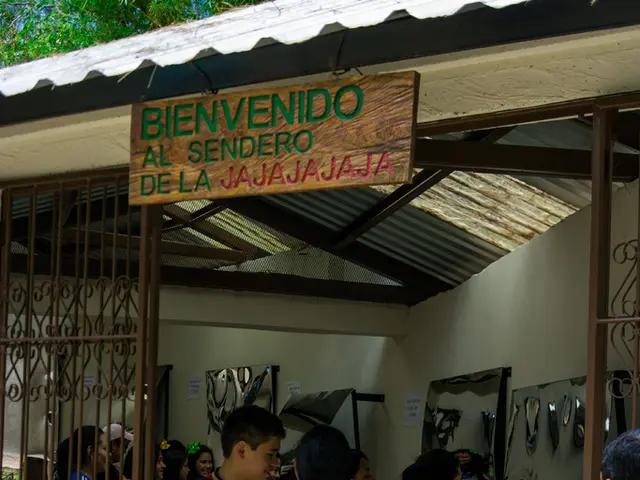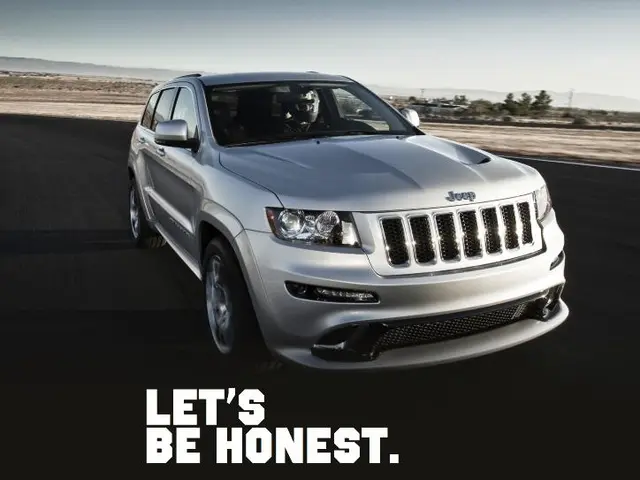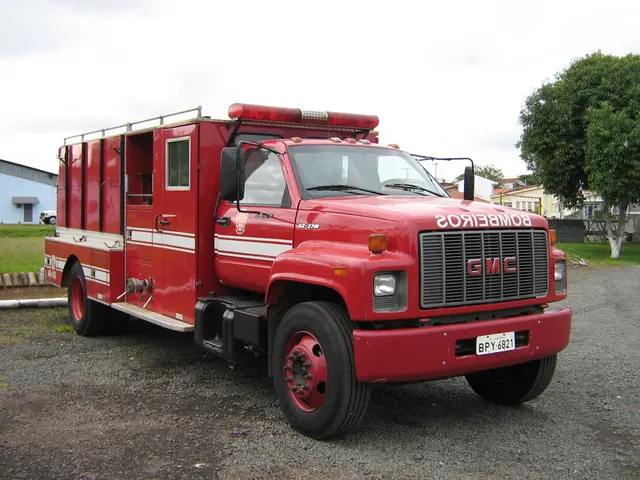Cars are unable to pass the TÜV inspection due to these minor issues. - Due to minor flaws, vehicles fail TÜV's inspection.
Get Ready for the Big Ride: Acetate that Sticker with Ease!
- Written by Christian Hensen
- ~ - 3 Mins
Listen up, fellow motörheads! Last year, approximately four out of every ten cars flunked their primary inspection. Yikes! Only 67.8 percent of the vehicles inspected made the grade without any problems. But don't let a re-inspection stress you out – it's totally avoidable!
You probably already know that there are four categories of defects during inspections with the TÜV (along with other inspection firms like Dekra or GTÜ). If your ride is deemed "defect-free," congrats! The sticker's yours! However, you might find some not-so-major bumps along the way – think scratched mirrors or a blinkin' faulty license plate light. These are known as "minor defects," and even though they don't ensure the inspection fails, they'll need to be fixed pronto, and a re-inspection ain't necessary. Consider it a kind gesture from the inspection crew – as long as you don't accumulate too many small glitches!
But buckle up, because things get serious with "major defects" – if tires are worn out, brakes are busted, or parts are rusted to smithereens, you're gonna fail, man. You then have 4 weeks to rectify the situation and get your vehicle back for a re-inspection. During this period, you're still good to travel. If your fixes are verified when you return, congrats! A brand-spankin' new sticker is yours!
Now let's talk about the real deal-breakers – "dangerous defects." If the inspector spots any flaws that present a "direct and immediate danger to traffic or the environment," you're out of luck. They won't hand over that sweet sticker, and your car can only be driven home or to the workshop. Within a month, you can re-present your car. If everything's settled, you're good to go with a fresh sticker!
But hey, if they find an "immediate danger to traffic," your car can get immobilized on the spot, and your road trip is over, pronto. This occurs when brakes or steering systems are defective, or there's severe corrosion on the chassis.
Cruisin' Without a Re-Inspection!
Worried about a re-inspection? No need! TÜV gives you a handy checklist. Some things are simple to verify, while others may only receive rudimentary checks. For example:
- Are all vehicle lights, inside and out, functioning properly?
- Are the vehicle glasses (headlights, windows) intact?
- Do the windshield wipers and washer work?
- Does the car brake when it should?
- Does the horn honk?
- Is the engine compartment "dry"?
- How much tread remains on the tires?
- Are the warning triangle, vest, and first aid kit with a valid expiration date in the car?
- Do any warning lights appear during the drive?
- For performance: Do you have all the properly stamped papers?
If you tick all these boxes, congratulations! You're on your way to a smooth inspection! It's easiest to secure the sticker during the inspection itself, especially if your ride is already undergoing repairs at a workshop. They'll likely spot and fix any bumps before the inspector arrives, saving you the stress and checklist hunting!
Oddities and Accessories
You might encounter some quirks during the inspection that you didn't anticipate. For example, the inspector might ask you to remove blind-spot mirrors affixed to the side mirrors or grumble about missing sun visors, particularly in convertibles. Also, inspectors will frown upon films on the front windows, painted headlight covers, or apparently matching but unauthorized LED bulbs.
- TÜV
- Auto
- Ride
- Primary inspection
- A community policy should be implemented to encourage vocational training in the automotive industry, focusing on the identification and correction of defects that often cause cars to fail primary inspections.
- To avoid expensive re-inspections, individuals should adhere to TÜV's community policy by using Dekra or GTÜ for inspections, while also ensuring they check off items on the provided list, including proper functioning of lights, brakes, and horn, and maintenance of tires and warning equipment.
- Curiosities may arise during inspections, such as inspectors asking for removal of blind-spot mirrors, disapproval of films on the front windows, or issues with painted headlight covers and unauthorized LED bulbs.
- In the automotive industry, the likelihood of vehicles passing a primary inspection increases with the adoption of proper maintenance and awareness of minor defects, leading to a safer driving environment.
- If an immediate dangerous defect is present during the primary inspection, the vehicle is likely to undergo immobilization, and a re-presentation for another inspection will be required within a month to secure a new sticker.




